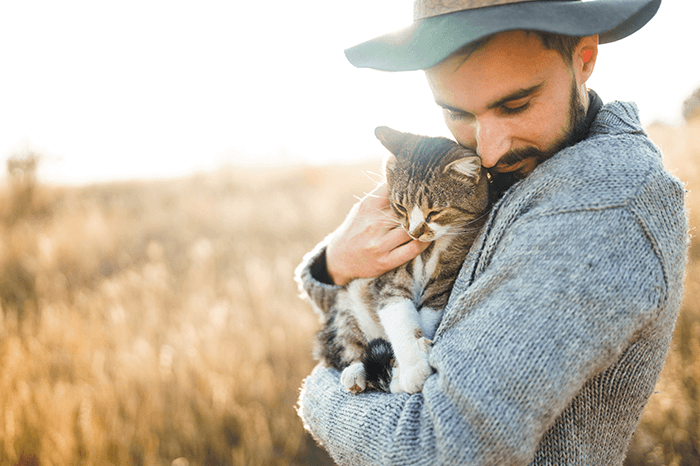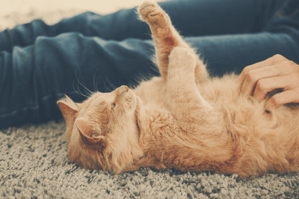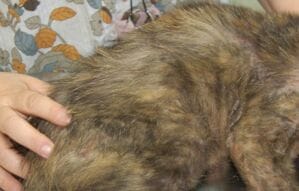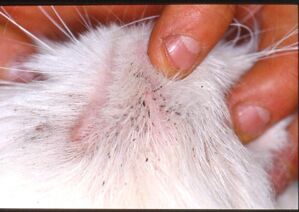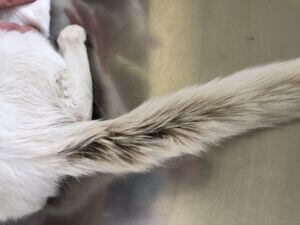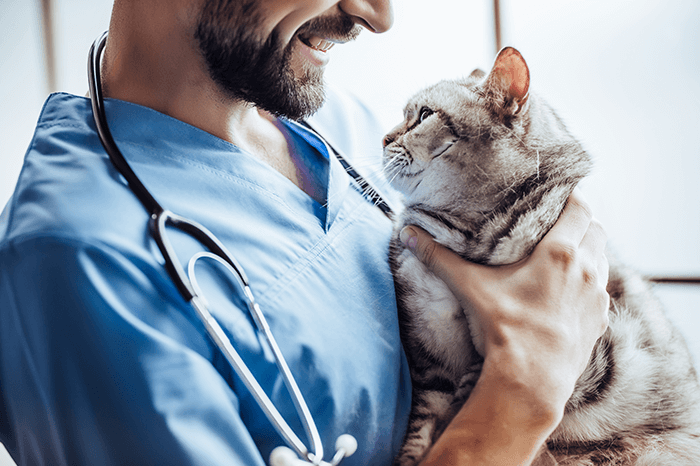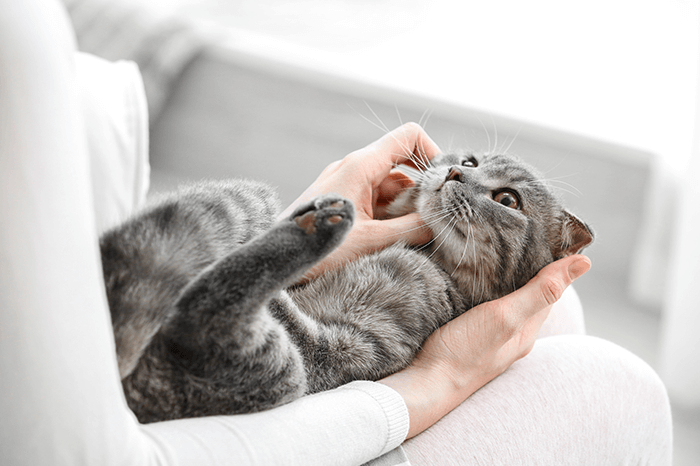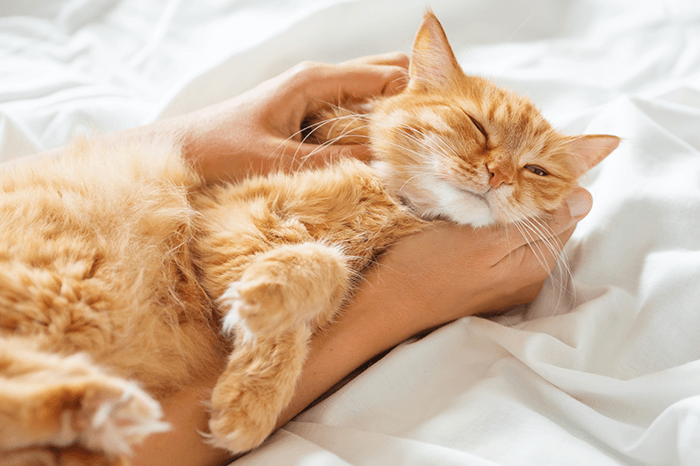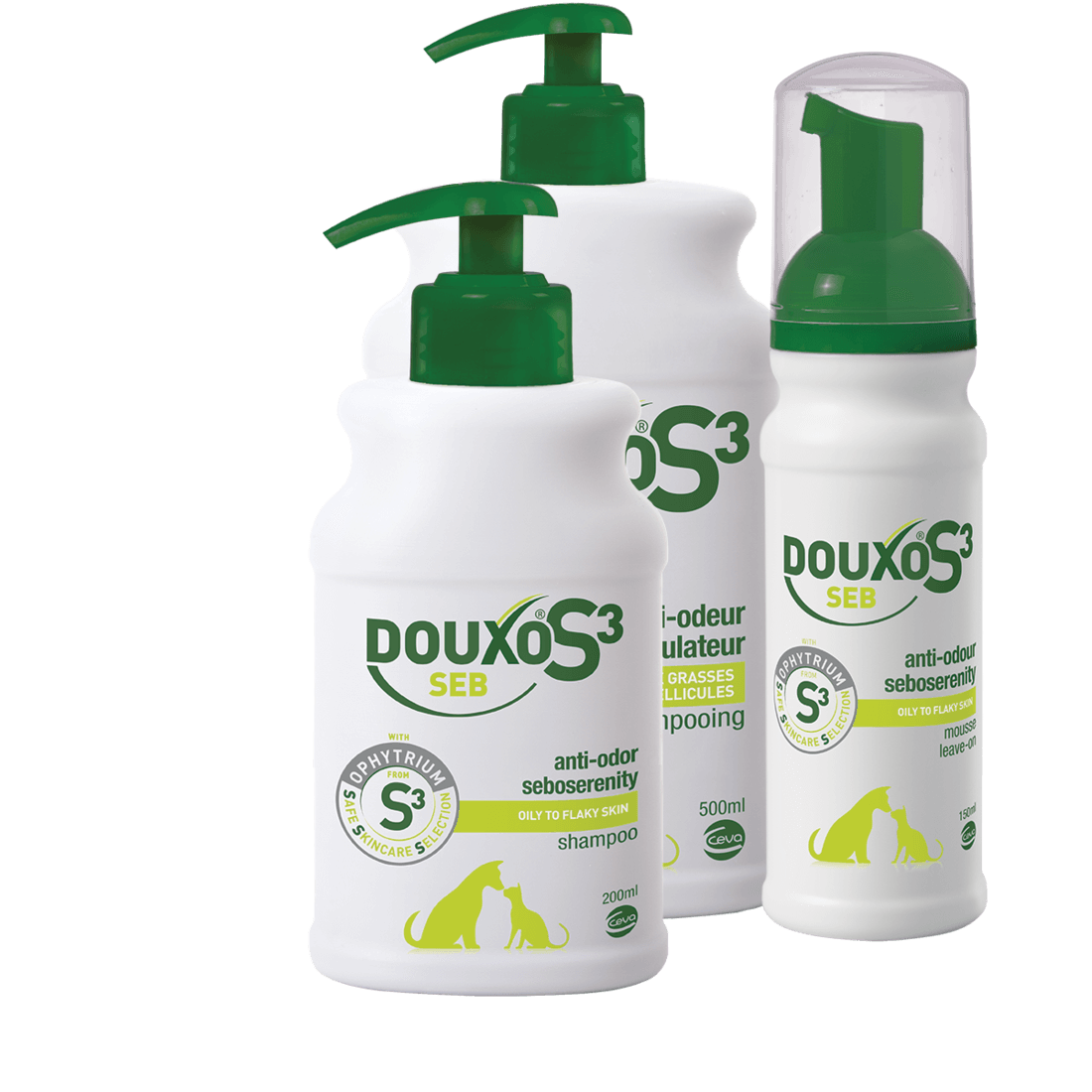Cat’s fur feel greasy – Is it serious?
Marina G VeterinarianCats are meticulous groomers so greasy seborrhea is not really common in cats. If you notice dandruff or oily skin, it is probably that something is wrong with your furry friend.
If you’re a cat owner, you are more than familiar with cats’ fastidious grooming habits. In fact, it may come as no surprise to hear that cats can spend many time in their day grooming! This meticulousness is one of the reasons why cats’ coats always look so shiny and lustrous, which is why changes in how the coat looks and feels should always be a reason for concern.
If you notice that your cat’s hair is greasy with oily skin, talk to your vet as there is likely to be something behind this.
What are the signs of oily seborrhoea?
Excessive sebum production can be a generalised problem, affecting the whole body, but it can also be localised, most often affecting the chin, and base of the tail. The accumulated sebum can also result in a strong, unpleasant smell, which is often what most easily grabs cat owners’ attention.
Where more generalised, cats may have a greasy, oily coat and an unpleasant odour coming from the skin.
In more localised areas, cats may present with blackheads, well known in feline acne where forming on the cat’s chin, usually followed by inflammation and possibly infection. Another greasy localised presentation is stud tail, a condition in which excess sebum accumulates at the base of the tail, that can be associated with hair loss, blackheads, skin redness and sometimes secondary infection.
Cats who have oily skin may also have dandruff, which is another natural skin response. Depending on the type of aggression, other skin lesions and signs, such as redness and irritation, crusting, itchiness, and hair loss, may also develop.
What causes oily skin and hair in cats?
Sebum production in cats
Throughout their body, cats have sebaceous glands that produce a natural oily substance, also known as sebum. However, these glands are not distributed evenly in the skin, with larger numbers being found on cats’ face, chin, neck, feet, rump and tail.
This oily secretion acts as part of the skin’s protective function, keeping it supple and hydrated. But it also has an important role in feline communication, as cats use it, alongside pheromones, to mark their territory by rubbing on objects and people and leaving behind their personal scent.
So, when does this natural oil become a problem?
Greasy skin and coat are usually the results of an imbalance of the skin due to aggression or health conditions. Aggression can be anything as simple as your cat catching fleas, more complicated skin conditions, or even systemic disease.
As a part of the skin’s protective response, the sebaceous glands increase the production of oil (sebum), thus leaving your cat’s skin and coat greasy. Vets usually call this oily seborrhoea or seborrhoea oleosa.
Causes of oily skin in cats can be divided into three major groups:
Oily skin due to reduced grooming
Sometimes, dull to oily skin can present not as a result of a skin condition or a condition that affects the skin but as a consequence of a problem elsewhere in the body. This is the case with any health condition that impairs cats’ ability to groom themselves, which include:
- Osteoarthritis and other joint problems,
- Excess weight and obesity,
- Painful conditions or other diseases that can cause lethargy.
In any case, these conditions require medical attention to alleviate pain or reduce body weight.
Oily skin secondary to other disorders
Oily seborrhoea, apart from reduced grooming origin is not a common presentation in cats. Conditions leading to greasy coat are mostly not skin conditions:
- Endocrine disease, such as diabetes and hyperthyroidism: the coat is dull and can look greasy as well
- A systemic internal disease affecting the liver, pancreas or intestines: in this case, oily skin is distributed all over the body
- Nutritional deficiencies
- Yeast skin infections, even if quite uncommon
- Not identified cause (so-called idiopathic): sometimes in spite of all tests, the cause is not identified. This is notably the case of stud tail.
Congenital and inherited diseases
These conditions are pretty rare. Some cat breeds, such as Persian, Himalayan and Exotic Shorthaired cats, are known to suffer from primary disorders with no underlying cause, namely primary idiopathic seborrhoea and idiopathic facial dermatitis, which can lead to oily skin and coat. These are believed to have an inherited component, with skin problems manifesting early in life.
When should you see your vet?
As greasy skin is most often the result of an underlying problem, it’s very important to seek veterinary help to investigate what might be causing it.
Usually, the diagnostic investigation of skin problems is very methodical and involves a step-by-step approach. Your vet may be able to find out what is wrong early on, but this may also be a lengthy process that requires a number of vet visits.
Do not despair! It may take some time to reach the correct diagnosis, but once it’s been discovered, treating the underlying condition is very likely to resolve your cat’s oily skin problem.
What can you do about your cat’s oily skin?
To an animal that dedicates such a big part of his time to make sure that his coat is in tip-top shape, we can only imagine how stressful it must be to have it oily and malodorous. Apart from finding and treating the cause when possible, you can improve your cat’s coat appearance and bring comfort to your pet with general measures.
Apply topical products to regulate sebum production
Anti-seborrhoeic topicals are intended to regulate sebum production and reduce unpleasant odours linked to excess sebum. Cats with greasy skin need their skin to be degreased while keeping a correct skin hydration. The choice of the product is major importance as some ingredients or excess removal of grease can damage the epidermis and alter skin hydration. DOUXO® S3 SEB Shampoo and Mousse were carefully formulated with Seboliance, a seboregulating ingredient, which help reduce excess grease from the skin and unpleasant odors, regulate cell turnover and helps prevent secondary yeast infection, in combination with hydrating and moisturising ingredients such as Ophytrium, which allow the skin to return to its normal texture without further irritation and drying.
Ensure a good grooming regime
If your cat is incapable of adequately grooming himself, consider giving him a hand. This is one of the reasons why establishing a home grooming routine early on in life is so important, as cats who are not used to being groomed may become fussy if they eventually need help taking care of their coat.
Feed a good quality diet
Providing your cat with a good, balanced diet is also paramount to skin and coat health. Some nutrients, vitamins and minerals are more involved in the skin’s natural process of regeneration, such as essential fatty acids, zinc, and vitamin A, for example, and your vet may recommend supplementation depending on your cat’s diet and other lifestyle and individual factors.
Preventing greasy skin and hair
Did you know that being an attentive cat owner is one of the most important factors for a timely diagnosis?
It’s true! Cat owners who are familiar with their cat’s looks, habits, routines and behaviours are an invaluable help in the diagnostic process and even in preventing further complications.
As soon as you notice something different on your cat’s skin, be it a change in texture, bald patches of skin, a skin lesion or even odd behaviours, don’t hesitate to discuss this with your vet.
We recommend paying extra attention to older cats, who are more likely to be affected by mobility issues that may hinder them from grooming, and to suffer from systemic conditions, such as chronic kidney disease and hyperthyroidism, that may manifest in changes in their coat as well.
